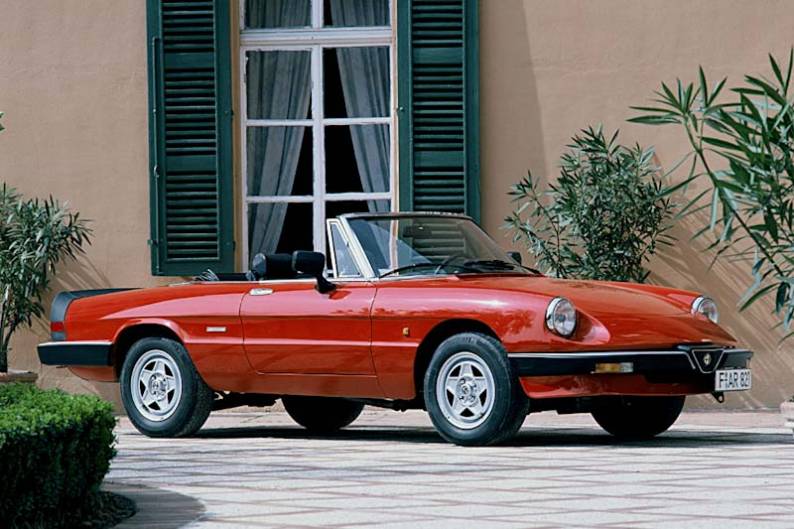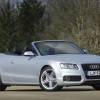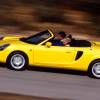
RAC sale – up to 33% off*
• Roadside cover from £5.29 a month†
• We get to most breakdowns in 60 mins or less
• Our patrols fix 4/5 breakdowns on the spot

BY ANDY ENRIGHT
Introduction
There aren't too many cars that qualify as style icons. Many try but are either too contrived to succeed or lack the appropriate historical resonance. One car that's become a true classic is Alfa Romeo's original Spider. Here is a car that survived in one form or another for over a quarter of a century but which still seems as relevant and as desirable as ever.
Looking good in a car like the Alfa Spider is easy. Finding one that's not a rotten basket case isn't such a cakewalk. There's no shortage of flaky examples about for which some less scrupulous traders are prepared to charge a hefty fee for. Do your homework, speak to a few enthusiasts and you should be able to come up with a car that still looks a million dollars and hopefully won't cost anything like as much to keep in tip top fettle.
Models
Models Covered:
Spider [1.3, 1.6, 1.75, 2.0-litre (Junior, Veloce]
History
Although convertible versions of the Giulietta Sprint date back to 1955, it wasn't until 1966 that Pininfarina styled the Giulia Sprint Spider, originally with a 109bhp 1600cc engine. This model, dubbed the Series 1, achieved fame in the Dustin Hoffman film 'The Graduate', and underwent a few incremental changes. In 1967 the 1600cc car was replaced by a short-tailed Veloce 1750cc model that added another 9bhp whilst in 1968 a 1300cc model was also made available for budget buyers.
The Series 1 was replaced in 1970 by - no prizes here - the Series 2. 1300cc and 1750cc versions continued, but the car that really cemented the Spider's place in history, the popular 2000cc Spider Veloce didn't arrive until later that year. With nearly 60,000 Series 2 cars built, this represents your happiest hunting ground.
The plastic-bumpered Series 3 debuted in 1982 and offered a choice of a 104bhp 1.6-litre engine or a 128bhp 2.0-litre. The 2.0-litre car was popular and paved the way for a facelift in 1990 that featured a more kicked up tail that housed the rear lights. Purists shunned these models, built between 1990 and 1993 as being rather too far removed from the original's purity of line, but if you're interested in the best car you can afford, these run-out editions are well worth a look.
What You Get
If you're a classic car enthusiast, there's no reason you shouldn't get on fine with an Alfa Spider. Step from a modern roadster into the Alfa and it may come as something of a culture shock. Ergonomics aren't a strong point, with the gear lever sprouting out of the dashboard at a novel angle and the minor switchgear is haphazardly scattered. Even the last of the Series 3 cars feels very idiosyncratic, but whichever model you go for, you'll get a decent amount of room for two and a surprisingly generously proportioned boot. If you want a car that works like a domestic appliance, go out and buy a Toyota Corolla. If, on the other hand, you quite fancy the appeal of a car that drips charisma from every pore, the Alfa Spider certainly won't disappoint. Unless, that is, you end up with a lemon.
What You Pay
Please fill in the form here for an exact up-to-date information.
What to Look For
The one golden rule when looking at Spiders is to choose the one with the best bodywork you can afford. This, after all, is the difficult and expensive bit. The mechanics are fairly tough, especially the 2000cc engines. All engines were very well designed and because the same basic engine was used in all models, many parts are interchangeable, readily accessible and available at reasonable cost. The engines were designed from racing technology and so are quite happy being pushed hard. Beware of owners who have excessively nannied their engines, as these units respond well to a good work out, low mileage cars often feeling a little tight and sluggish. Like many Alfa Romeo powerplants, this one doesn't appreciate owners unprepared to explore the far side of 2000 rpm. Don't over-rev until they are warm though and this can take a good fifteen minutes in a Spider. They do seem to run cool, although the gauges in a Spider can never really be relied upon. The oil pressure gauge is particularly useless so get the oil pressure checked properly if you are at all worried.
Soft-top hoods can easily become tatty but there are a number of specialists who will undertake refurbishment projects. Water from the roof can drain down into the sills and Alfa never engineered any drainage holes to let this water back out again, resulting in dreadful rust problems. Check that the sills are firm and that they are still made of metal and not filler by using a magnet. Most careful owners will have drain holes drilled. Another thing to watch out for is a lack of brake pressure and white smoke coming from the exhaust. This is a common problem on older cars with servo-assisted brakes. As the seals in the servos get old, they let through brake fluid. The brake fluid is then sucked into the inlet manifold and burned in the engine. This produces the white smoke and eventually you lose brake pressure due to the loss of brake fluid. Fortunately, this is a relatively easy fix using a servo reconditioning kit that generally costs around £35. Take a car that displays these symptoms to a garage and due to liability concerns they will likely replace all the servos, brake lines and master cylinder which will set you back the thick end of £1,000 including labour!
Replacement Parts
(approx based on a 1990 Spider 2.0 excl. VAT) A clutch assembly will be around £200, while a front damper is around £50. Front brake pads also go for around £50 and an exchange alternator will set you back somewhere in the region of £120. An exchange radiator is £250 and an exhaust system is around £225.
On the Road
The Spider has a characteristic feel that endears it to many. Compared to a modern roadster it feels loose limbed, rather as if all the parts are flying in close formation rather than being bolted firmly together. The steering wheel bucks and jiggles in your hands and requires a bit of a twirl before the front wheels deign to do anything. The gearchange is also an acquired taste, the long throw gear lever describing some unusual angles as you guide it around the 'box. Somehow these only serve to render the car more exotic in feel and less like an everyday production car. Being made to work to achieve your pleasures is a concept that has gone by the by amongst modern cars but the Alfa rewards your input by painting a huge grin all over your face. Even the early cars are respectably quick, a 109bhp 2,000cc car from 1967 accelerating to 60mph in 11.3 seconds and topping out at nearly 120mph.
Overall
There's a great deal to be said for a well looked after Spider and not a lot going for a neglected one. There are a surprising number available, so the best advice would be to shop around, buy the car with the best bodywork you can afford and to speak to as many owners as possible. Get it right and you'll end up with a style icon that's surprisingly low maintenance.



![BMW M4 [F82] (2014 - 2020) used car review](https://d1ix0byejyn2u7.cloudfront.net/drive/images/made/drive/images/remote/https_d2yv47kjv2gmpz.cloudfront.net/filestore/6/1/5_2149d4376476a66/62fcfcd24f571947d50c9144c07550e8/516_bd394df2f6c7f0a_100_100_70_c1_c_c.jpg)



